Pets and Animals
Unleashing the Athlete: Building Muscle in Your Pitbull Dog
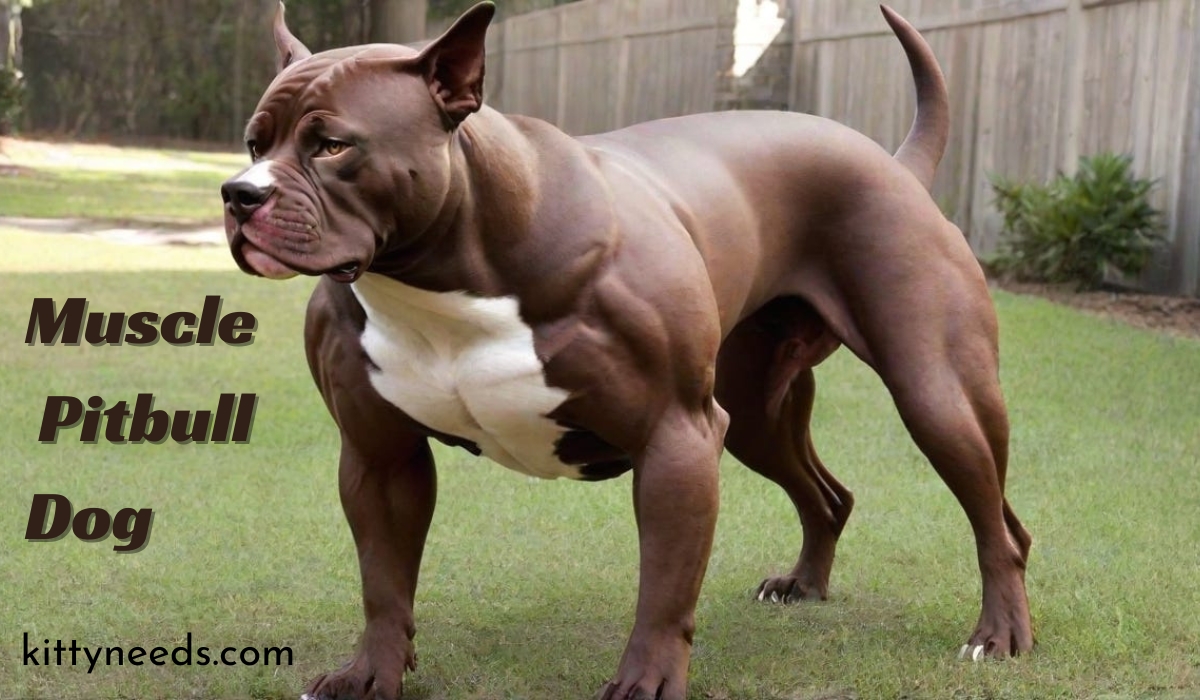
Muscle Pitbull Dog
Pitbulls, often regarded as the bodybuilders of the canine world, possess a natural physique that exudes power and agility. Responsible for tasks ranging from hunting to herding and serving as loyal companions, these dogs carry a legacy of athleticism. While genetics provide a solid foundation, the development and maintenance of muscle in pitbulls are as much an art as a science, requiring dedication from pet owners and a comprehensive approach to exercise, nutrition, and health management.
In this comprehensive guide, we’ll walk you through the intricacies of cultivating and preserving muscle in your pitbull, ensuring that every rep, every meal, and every bit of love and care you provide contributes to a lifestyle that fully captures the potential of your dog’s athleticism.
The Muscular World of Pitbulls
Pitbulls have a reputation for power and athleticism, characterized by their strong jaws and imposing stance. Their muscular build, when properly maintained, serves them well in various physical activities. However, unlike bodybuilders who engage in targeted training to sculpt specific muscles, pitbulls benefit most from overall strength and muscular balance to support their natural abilities and overall health.
Beyond the aesthetics, the benefits of a well-muscled pitbull are numerous. There’s improved strength, which enhances performance in dog sports, increases endurance for long walks or runs, and has been linked to a longer, healthier life overall.
The Genetic Foundation
The first step in understanding your pitbull’s muscle potential is to acknowledge the role of genetics. Pitbulls, specifically those bred from working lines, are more likely to inherit traits that facilitate muscle development. The genes that control muscle growth, fiber type, and strength play a crucial role in determining the baseline for your dog’s physique.
Appreciating this genetic influence allows owners to set realistic expectations and goals for their dog’s muscle building. It’s essential to understand that while your pitbull may have the potential for an impressive muscular profile, it’s through dedicated effort that this potential is realized.
Exercise, the Sculptor’s Chisel
Exercise is the keystroke that transforms genetic potential into active muscle. But not any activity will do. For most pitbulls, a balanced exercise regimen designed with input from professionals experienced in canine fitness is essential.
For muscle building, focus should be on strength training exercises that engage multiple muscle groups, like resistance-based activities of weighted pulling or tug of war, and high-intensity interval training that mirrors the bursts of energy needed in their natural inclinations toward sprinting and agility.
The Right Way to Build Muscle
Building muscle in your pitbull should always prioritize health and safety. This section will focus on how to optimize exercise, diet, and recovery to build muscle safely and effectively.
Exercise – A Blueprint for Success
An effective workout plan for your pitbull should include a variety of exercises that challenge different muscle groups. Incorporate daily walks for cardiovascular health, and add strength training sessions such as weight-pulling, balanced object carries, and even canine parkour alongside high-intensity activities like sprinting.
The key is maintaining variety while also ensuring that your dog is always supervised and that the exercises are appropriate for their age, conditioning, and any health concerns.
The Diet Delineation
A pitbull’s diet is a critical part of muscle building. High-protein foods that support the development and repair of muscles are essential. A balanced diet with quality protein from sources like fish, lean meat, and dairy is necessary to fuel muscle growth.
Carbohydrates are also valuable as they provide the energy for exercise, but should be complemented by good fats for overall health and to aid in the absorption of fat-soluble vitamins essential for muscle function.
Rest and Recovery
Building muscle doesn’t happen during the workout – it’s the rest periods that allow for growth and repair. For pitbulls, adequate rest between exercises and appropriate sleep are critical for muscle development. Overtraining can lead to injury, fatigue, and a decrease in muscle mass.
Ensuring your dog has a comfortable, quiet space for rest and day-long mental stimulation through toys and puzzles will facilitate the recovery process, resulting in stronger, healthier muscles.
The Muscular Meal Plan
In this section, we will take a closer look at the components of a meal plan that promotes muscle growth in pitbulls. We will provide you with a sample meal plan and discuss the importance of essential nutrients.
The Macro and Micro of Muscle Meals
An ideal diet for muscle building includes a balance of macronutrients – proteins, carbohydrates, and fats. Proteins are the building blocks of muscle, so they should be the centerpiece of the meal. Carbohydrates provide the energy needed for exercise and play an important role in glycogen replenishment post-workout.
Healthy fats, often overlooked in muscle-building diets, are essential for hormone production and the absorption of fat-soluble vitamins. Additionally, microminerals and vitamins are crucial for maintaining the health of muscles, bones, and joints.
Sample Meal Plan
Breakfast
- 1 cup of rice
- 2 eggs
- 1/2 cup of cooked ground beef
Lunch
- 1 cup of sweet potatoes
- 1 cup of chicken
- 1/2 cup of green beans
Dinner
- 1 cup of quinoa
- 1 cup of sardines
- 1/2 cup of carrots
This provides a high-protein, moderate carbohydrate, and moderate-fat diet that supports muscle growth and energy requirements.
Pitfalls of Building Pitbull Muscles
In this section, we explore the dangers of overtraining and how to avoid injuries while striving for muscular development.
Understanding Overtraining
Overtraining occurs when the dog is pushed beyond its recovery limits. Signs of overtraining can include decreased performance, increased fatigue, changes in appetite, and signs of stress or irritability.
Preventing Injuries
To avoid overtraining, it’s crucial to monitor your dog’s behavior and performance during workouts. If your pitbull is showing signs of stress or fatigue, adjust the routine accordingly. Additionally, gradually increasing the intensity and duration of exercises will allow your dog’s body to adapt and strengthen without risking injury.
The Symphony of Safety
A well-thought-out exercise regimen paired with a nutritionally balanced diet is the trajectory you need to steer your pitbull toward peak physical condition. Yet, adhering to safety and health guidelines is equally important.
The Gradual Approach
Starting slow is not only safe, but it also sets the groundwork for long-term muscle development. Remember, a muscle built over time is a strong, resilient muscle.
Consult the Canine Counsel
Before ramping up any exercise routine, consult with a veterinarian about your pitbull’s individual needs and any health conditions that might affect their ability to undertake a muscle-building program.
YOU MAY ALSO LIKE
Black Beauty: Unveiling the Alluring Pitbull Dog Black
Conclusion
The quest to build muscle in your pitbull is a testament to the deep bond between owners and their athletic canine companions. By understanding the interplay of genetics, exercise, diet, and recovery, you can sculpt a physique that not only elevates physical performance but also enhances well-being. It’s a commitment that requires patience, knowledge, and an unwavering appreciation for the incredible potential that lies within your loyal friend.
Understand that health and happiness should always come first, and the strength and agility that come with muscular development are but the natural byproducts of a carefully calibrated lifestyle.
Through these nuanced insights, may your pitbull reach the pinnacle of its potential, unlocked and expressed in each rippling sinew, each purposeful stride. The athlete within your pitbull is ready to be fully realized – now it’s time to hold the leash that will set it free.
Frequently Asked Questions
1. How much protein does my pitbull need to build muscle?
Answer: The amount of protein needed can vary based on your pitbull’s size, age, and level of activity. On average, a diet consisting of 30% to 40% protein from high-quality sources is recommended for muscle growth. It’s essential to consult with a veterinarian to determine the exact requirements for your specific dog.
2. Can overtraining cause permanent damage to my pitbull?
Answer: Overtraining can lead to injuries, some of which may have long-term effects on your pitbull’s health and wellbeing. Chronic overtraining can result in joint damage, chronic fatigue, or other health issues. Monitoring your dog’s behavior and giving them adequate rest is crucial to prevent overtraining.
3. Are carbohydrates important for a pitbull’s muscle-building diet?
Answer: Yes, carbohydrates are essential as they provide the energy needed for exercise and daily activities. They also play a crucial role in the muscle recovery process by replenishing glycogen stores. However, the carbohydrate intake should be balanced with proteins and fats to ensure a well-rounded diet.
4. How can I tell if my pitbull is getting enough rest for muscle recovery?
Answer: Adequate rest is signaled by your dog’s energy levels and enthusiasm for exercise. If your pitbull seems lethargic or uninterested in activities they usually enjoy, it may indicate they need more rest. A good rule of thumb is to ensure your pitbull has at least one rest day per week and gets enough sleep each night.
5. What is the best way to prevent injuries during muscle-building exercises?
Answer: The best way to prevent injuries is to start with a gradual increase in the intensity and duration of exercises. Pay attention to your dog’s limits and adjust the workout accordingly. Additionally, consult with a veterinarian to ensure the exercise plan is suitable for your pitbull’s health status and physical capabilities. Keeping the workouts varied and incorporating appropriate warm-up and cool-down periods can also help reduce the risk of injuries.
Pets and Animals
Dogtor Box’s Guide to Keeping Your Dog’s Joints Healthy and Happy
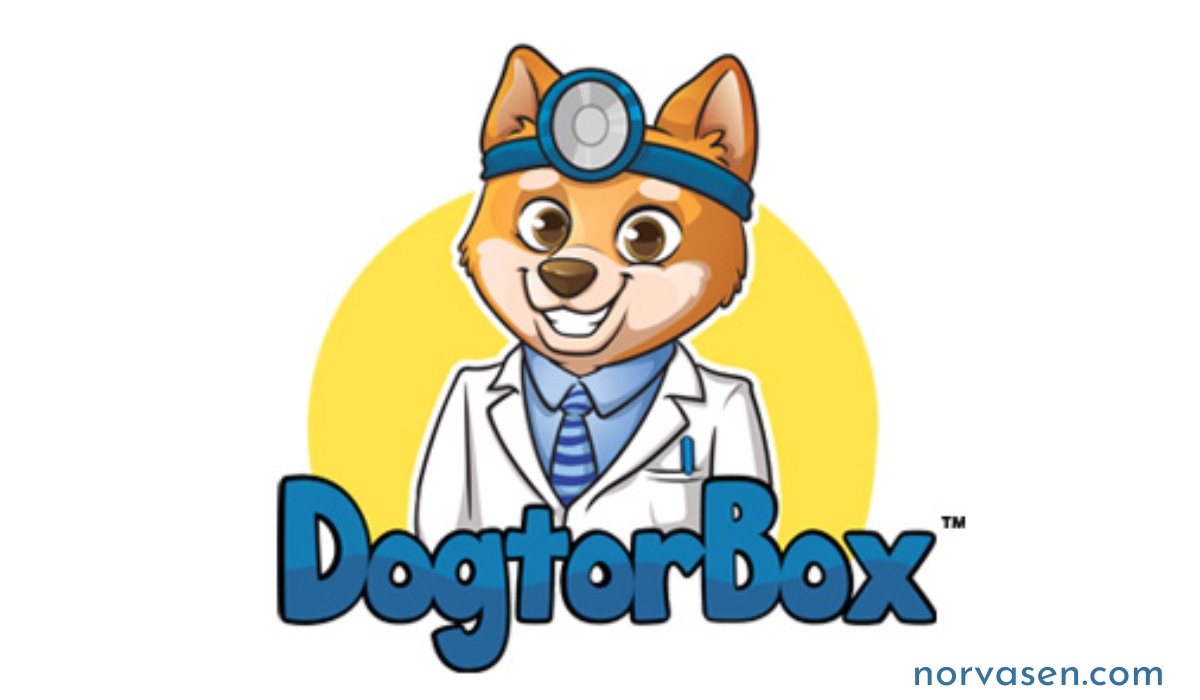
Introduction to Dogtor Box
Welcome to Dogtor Box, where our mission is to enhance pet wellness through veterinarian-formulated products. We understand the vital role pets play in our lives and are dedicated to ensuring they enjoy optimal health and well-being. Our range of joint support soft chews is designed to address the specific needs of dogs, especially those experiencing joint issues. In this blog post, we’ll explore the importance of joint health in dogs, share practical tips for maintaining it, and highlight how Dogtor Box can make a difference.
The Importance of Joint Health in Dogs
Joint health is a key component of a dog’s overall well-being, particularly for aging pets or those with active lifestyles. Healthy joints are essential for mobility, allowing dogs to run, play, and enjoy their daily activities without pain or discomfort. When joint health is compromised, it can significantly impact a dog’s quality of life, leading to decreased activity levels, weight gain, and even depression.
For older dogs, joint health becomes increasingly important as the natural aging process can lead to wear and tear on the joints. Active dogs, such as working breeds or those involved in agility training, also put extra strain on their joints, making it crucial to support them with proper care and nutrition.
By prioritizing joint health, pet owners can ensure their furry companions remain active, happy, and healthy throughout their lives. This is where Dogtor Box comes in, offering veterinarian-formulated solutions to support and maintain optimal joint health.
Understanding Joint Health Issues in Dogs
Joint health issues are common in dogs, with conditions like arthritis and hip dysplasia affecting many pets. These conditions can cause significant pain and discomfort, limiting a dog’s ability to move freely and enjoy their favorite activities.
Arthritis is one of the most prevalent joint issues in dogs, particularly in older pets. It occurs when the cartilage that cushions the joints wears down, leading to inflammation and pain. Symptoms of arthritis in dogs include stiffness, limping, and reluctance to move or climb stairs.
Hip dysplasia is another common condition, especially in larger breeds. It is a genetic disorder where the hip joint doesn’t fit properly into the hip socket, causing pain and leading to arthritis over time. Dogs with hip dysplasia may show signs of lameness, decreased range of motion, and difficulty rising from a lying position.
Understanding these conditions and their symptoms is crucial for early detection and intervention. Regular veterinary check-ups and monitoring your dog’s behavior can help identify joint issues before they become severe, allowing for timely treatment and management.
The Role of Nutrition and Supplements in Supporting Joint Health
Nutrition plays a significant role in maintaining joint health in dogs. A balanced diet that provides essential nutrients supports overall health and can help prevent or manage joint issues. Incorporating natural supplements, such as joint support soft chews, can further enhance a dog’s joint health.
Glucosamine and chondroitin are two key ingredients commonly found in joint supplements. Glucosamine helps rebuild cartilage, while chondroitin prevents the breakdown of cartilage and promotes water retention in the joints, improving their function and reducing pain.
Omega-3 fatty acids, found in fish oil, have anti-inflammatory properties that can help reduce joint inflammation and pain. Adding these supplements to your dog’s diet can improve their joint health and overall well-being.
Dogtor Box’s joint support soft chews are formulated with these essential ingredients, providing a convenient and effective way to support your dog’s joint health. Our chews are not only beneficial but also delicious, making it easy for your dog to enjoy their daily dose of joint support.
Vet-Approved Tips for Maintaining Optimal Joint Health
Maintaining your dog’s joint health requires a proactive approach, combining proper nutrition, regular exercise, and routine veterinary care. Here are some vet-approved tips to help you keep your dog’s joints healthy and functional:
Exercise:
Regular exercise is important for maintaining joint health, but it’s vital to choose the right type and amount of activity for your dog. Low-impact exercises like walking, swimming, and gentle play can help keep your dog’s joints flexible and strong without causing excessive strain. Avoid high-impact activities that can worsen joint issues, especially if your dog is already experiencing joint pain.
Weight Management:
Keeping your dog at a healthy weight is crucial for joint health. Excess weight puts additional strain on the joints, exacerbating existing issues and increasing the risk of developing new ones. Monitor your dog’s diet and ensure they receive appropriate portions and a balanced diet to maintain a healthy weight.
Regular Check-Ups:
Routine veterinary check-ups are essential for early detection and management of joint issues. Your veterinarian can assess your dog’s joint health, recommend appropriate treatments or supplements, and provide guidance on maintaining their overall well-being. Regular check-ups allow for timely intervention, preventing minor issues from becoming major problems.
By following these tips and incorporating Dogtor Box’s joint support soft chews into your dog’s routine, you can help maintain their joint health and ensure they stay active and happy.
Dogtor Box’s Approach to Pet Wellness
At Dogtor Box, we are committed to providing high-quality, veterinarian-formulated products that support your pet’s health and well-being. Our joint support soft chews are designed to address the specific needs of dogs with joint issues, offering a convenient and effective solution to maintain their joint health.
Our products are developed in collaboration with veterinarians, ensuring they meet the highest standards of quality and efficacy. We use only the finest ingredients, carefully selected for their proven benefits in supporting joint health. Each batch of our chews undergoes rigorous testing to ensure they are safe, effective, and delicious.
In addition to our products, Dogtor Box offers exceptional customer support, guiding pet owners in choosing the right products and providing expert advice on maintaining their pet’s health. We are dedicated to building a community of pet owners who share our commitment to proactive pet care and wellness.
Success Stories and Testimonials
Don’t just take our word for it—hear from pet owners who have seen the benefits of Dogtor Box’s joint support chews firsthand:
Bella’s Story:
Bella, a 10-year-old Labrador, struggled with arthritis, making it difficult for her to enjoy her daily walks. After incorporating Dogtor Box’s joint support chews into her routine, Bella’s owner noticed a significant improvement in her mobility and energy levels. Today, Bella is back to her playful self, enjoying her walks and living her best life.
Max’s Testimonial:
Max, a 7-year-old German Shepherd, was diagnosed with hip dysplasia. His owner started him on Dogtor Box’s joint support chews, and within weeks, Max showed remarkable progress. He was more active, had less pain, and could move more freely. Max’s owner credits Dogtor Box for helping Max maintain his quality of life and stay active.
These success stories highlight the positive impact of Dogtor Box’s joint support chews on dogs’ lives. Our veterinarian-formulated products can make a real difference, improving your dog’s joint health and overall well-being.
Why Choose Dogtor Box for Your Dog’s Joint Health
When it comes to your dog’s health, choosing the right products is essential. Dogtor Box stands out for several reasons:
Vet-Formulated:
Our products are developed in collaboration with veterinarians, ensuring they meet the highest standards of quality and efficacy. You can trust that our joint support chews are safe and effective for your dog.
High-Quality Ingredients:
We use only the finest ingredients, carefully selected for their proven benefits in supporting joint health. Our chews are free from artificial additives, ensuring your dog gets the best possible care.
Convenience and Taste:
Our joint support chews are not only beneficial but also delicious. Dogs love the taste, making it easy to incorporate them into their daily routine. The chews are also convenient and mess-free, making them a hassle-free addition to your dog’s diet.
Conclusion – Prioritizing Your Dog’s Joint Health
Proactive pet care is essential for maintaining your dog’s joint health and overall well-being. By understanding the importance of joint health, recognizing common issues, and taking steps to support your dog’s joints, you can ensure they live a happy and active life.
Dogtor Box’s joint support soft chews offer a convenient and effective solution for maintaining your dog’s joint health. With veterinarian-formulated products, high-quality ingredients, and a commitment to pet wellness, Dogtor Box is your trusted partner in caring for your furry companion.
Take the Next Step for Your Dog’s Health
Ready to prioritize your dog’s joint health? Explore Dogtor Box’s range of veterinarian-formulated products and discover how our joint support chews can benefit your pet. Join our community of pet owners committed to proactive care and give your dog the gift of optimal joint health. Visit our website and get started today
Pets and Animals
Dive into Adventure: Exploring Miami Seaquarium – Florida’s Premier Aquarium

Introduction:
Nestled in the heart of sunny Miami, Florida, lies an aquatic wonderland like no other – the Miami Seaquarium. Boasting a rich tapestry of marine life, interactive exhibits, and conservation initiatives, the Seaquarium stands as a beacon of education, entertainment, and family fun. Join us as we embark on an unforgettable journey through the depths of this aquatic paradise.
Discover the Dolphins:
Interactive Encounters Step into the world of these intelligent and playful creatures with Miami Seaquarium’s renowned dolphin interactions. From up-close encounters to exhilarating dolphin shows, visitors have the opportunity to forge connections with these magnificent mammals like never before. Imagine the thrill of swimming alongside them or witnessing their acrobatic feats firsthand. It’s an experience that promises to leave a lasting impression on visitors of all ages.
Marine Conservation:
Protecting Our Oceanic Heritage At Miami Seaquarium, conservation isn’t just a mission – it’s a way of life. Dive into the depths of marine preservation efforts and discover the vital role each of us plays in safeguarding our oceanic ecosystems. Engage in educational programs, participate in conservation initiatives, and gain insights into the importance of preserving marine biodiversity for future generations. It’s a chance to make a difference while experiencing the wonders of the underwater world.
Family Entertainment:
Fun for All Ages Looking for the perfect family outing? Look no further than Miami Seaquarium. With a diverse range of attractions and activities, there’s something for everyone to enjoy. From thrilling animal encounters to exciting exhibits and shows, the Seaquarium offers endless opportunities for family fun and adventure. Create lifelong memories as you explore the wonders of the sea together.
Engaging Content Ideas:
- Dive into Discovery: Explore interactive exhibits showcasing a diverse array of marine life, including sharks, sea turtles, and tropical fish.
- Behind-the-Scenes Tours: Go behind the scenes for a glimpse into the inner workings of Miami Seaquarium, from animal care to conservation efforts.
- Educational Workshops: Engage in hands-on workshops and educational sessions designed to inspire a love for marine life and conservation.
- Animal Encounters: Get up close and personal with your favorite marine animals through special encounters and feeding experiences.
- Conservation Talks: Attend informative talks and presentations led by marine biologists and conservationists, shedding light on pressing issues facing our oceans today.
Conclusion:
Miami Seaquarium stands as a beacon of marine conservation, family entertainment, and educational enrichment. With its unparalleled array of attractions and activities, it offers visitors a chance to dive deeper into the wonders of the sea while fostering a deeper appreciation for our oceanic heritage. Whether you’re seeking adventure, education, or simply a day of family fun, the Seaquarium promises an experience like no other. Come explore, discover, and make memories that will last a lifetime.
Pets and Animals
How Much Do Bearded Dragons Cost? Your Comprehensive Guide
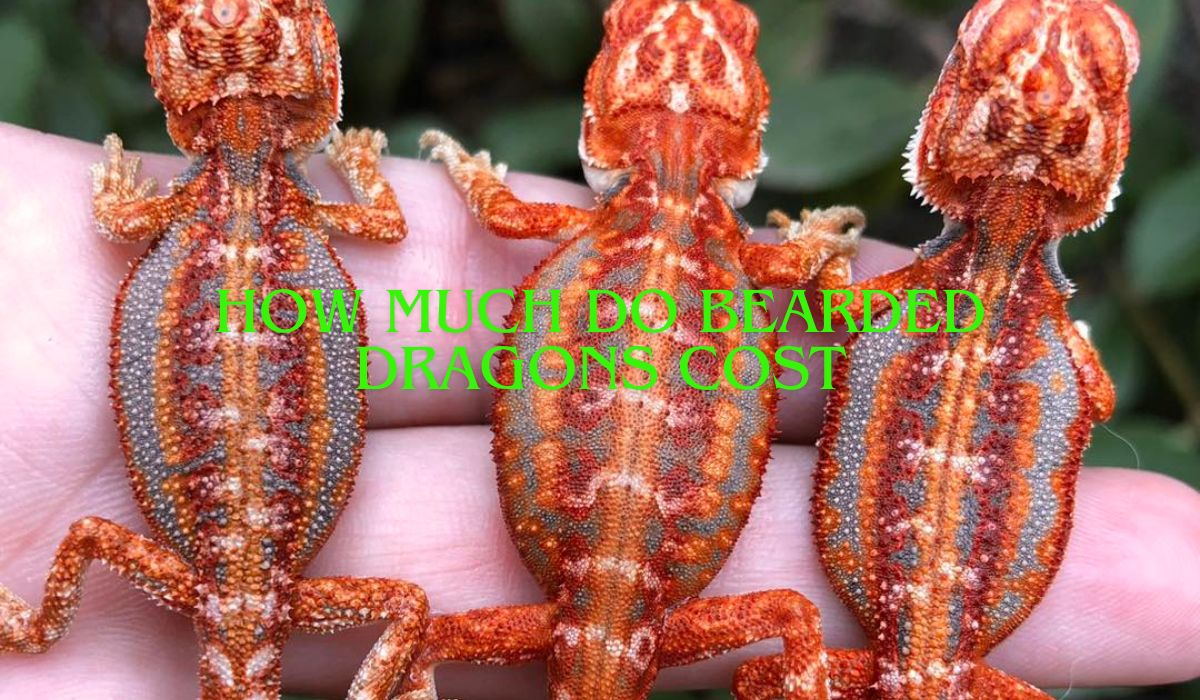
Introduction:
Bearded dragons are fascinating reptiles that have gained popularity as pets due to their docile nature and unique appearance. If you’re considering adding one of these scaly companions to your family, one of the first questions you may have is, “How much do bearded dragons cost?” In this comprehensive guide, we’ll delve into all the factors that contribute to the cost of owning a bearded dragon, from initial setup expenses to long-term care costs.
Chapter 1: Initial Purchase Price
When it comes to buying a bearded dragon, the cost can vary depending on factors such as age, morph, and where you purchase them from. Here’s a breakdown of what you can expect to pay:
- Hatchlings: Baby bearded dragons, or hatchlings, are typically the least expensive option, ranging from $20 to $100. However, keep in mind that younger dragons may require more specialized care.
- Juveniles: Juvenile bearded dragons, between 2 to 4 months old, may cost between $50 to $200, depending on their size and coloration.
- Adults: Adult bearded dragons, over a year old, can range from $100 to $500 or more, with factors such as gender, size, and color influencing the price.
- Morphs: Bearded dragons come in a variety of morphs, which are variations in color and pattern. Rare or high-demand morphs can fetch prices upwards of $1,000 or more.
Chapter 2: Habitat Setup Costs
Creating the perfect habitat for your bearded dragon is essential for their health and well-being. Here’s what you’ll need to consider in terms of setup costs:
- Enclosure: A suitable enclosure for a bearded dragon can range from $50 for a basic tank to $500 or more for a custom-built vivarium.
- Heating and Lighting: Proper heating and lighting are crucial for maintaining the right temperature and providing UVB exposure. Expect to spend around $50 to $200 on heat lamps, UVB bulbs, and fixtures.
- Substrate and Decor: Substrate, such as reptile carpet or tile, and decor items like rocks, branches, and hides, can add another $20 to $100 to your setup costs.
- Thermometers and Hygrometers: Accurate temperature and humidity monitoring are essential. Plan to spend around $20 to $50 on quality thermometers and hygrometers.
Chapter 3: Ongoing Care Expenses
Once you’ve set up your bearded dragon’s habitat, there are ongoing expenses to consider for their care and maintenance:
- Food: Bearded dragons require a varied diet consisting of live insects, fruits, and vegetables. Depending on the size of your dragon and the quality of the food, expect to spend around $20 to $50 per month on food.
- Veterinary Care: Routine veterinary check-ups and potential medical expenses should be factored into your budget. While the cost can vary, budgeting around $100 to $300 per year for vet expenses is a good starting point.
- Substrate Replacement: Substrate will need to be replaced regularly to maintain cleanliness and hygiene in your dragon’s enclosure. Budget around $20 to $50 per month for substrate replacement.
- Supplements: Calcium and vitamin supplements are essential for bearded dragons’ health. Plan to spend around $10 to $20 per month on supplements.
Chapter 4: Additional Expenses
In addition to the essential costs mentioned above, there are other potential expenses to consider:
- Enclosure Upgrades: As your bearded dragon grows, you may need to upgrade their enclosure to accommodate their size. Budget for potential enclosure upgrades down the line.
- Accessories: Additional accessories such as basking platforms, climbing structures, and enrichment toys can enhance your dragon’s habitat but will add to your expenses.
- Travel Costs: If you need to travel with your bearded dragon or board them while you’re away, factor in these additional expenses.
- You may also like: Revealing the Enigma of Ovestæ: Delving into the Secrets Behind This Intriguing Locale
Conclusion
While the initial cost of purchasing a bearded dragon may vary depending on factors such as age and morph, it’s essential to consider the ongoing expenses associated with their care and maintenance. By budgeting for both the upfront and long-term costs, you can ensure that you provide your scaly friend with the best possible care without breaking the bank. So, if you’re ready to embark on the journey of owning a bearded dragon, remember to plan ahead and budget accordingly for a rewarding and fulfilling experience.
FAQS
- How much does a bearded dragon cost?
- The cost of a bearded dragon can vary depending on factors such as age, morph, and where you purchase them from. Hatchlings may range from $20 to $100, juveniles from $50 to $200, and adults from $100 to $500 or more. Rare morphs can fetch prices upwards of $1,000.
- What is the average setup cost for a bearded dragon habitat?
- The average setup cost for a bearded dragon habitat includes the enclosure, heating and lighting equipment, substrate, decor, and monitoring tools. Expect to spend between $200 to $800 or more depending on the size and complexity of the setup.
- How much do bearded dragon owners spend on food monthly?
- Bearded dragon owners typically spend around $20 to $50 per month on food for their pets. This includes live insects, fruits, and vegetables to provide a balanced diet for their reptile companions.
- What are the ongoing care expenses for bearded dragons?
- Ongoing care expenses for bearded dragons include food, veterinary care, substrate replacement, and supplements. Budgeting around $100 to $300 per year for vet expenses and $20 to $50 per month for food and substrate replacement is recommended.
- Are there any additional expenses associated with owning a bearded dragon?
- Yes, there can be additional expenses associated with owning a bearded dragon. These may include enclosure upgrades as the dragon grows, purchasing accessories such as basking platforms and enrichment toys, and potential travel costs if you need to transport or board your pet.
-

 Pets and Animals7 months ago
Pets and Animals7 months agoShovel Dog: Everything You Need to Know
-
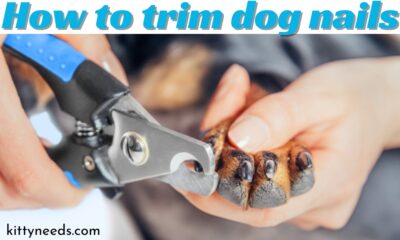
 Pets and Animals7 months ago
Pets and Animals7 months agoHow To Trim Dog Nails: A Step-by-Step Guide for Painless Pups and Peace of Mind
-
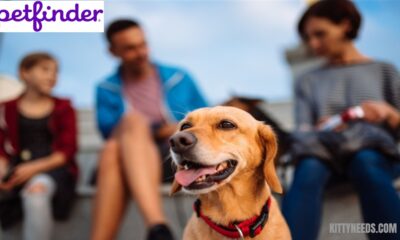
 Pet Care Guides7 months ago
Pet Care Guides7 months agoGive a Loving Home: Adopt a Pet, Change a Life with Pet finder
-
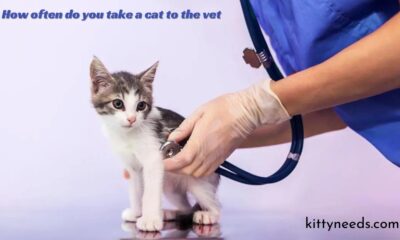
 Pets and Animals7 months ago
Pets and Animals7 months agoHow Often Do You Take A Cat to the Vet? A Guide for Caring Owners
-
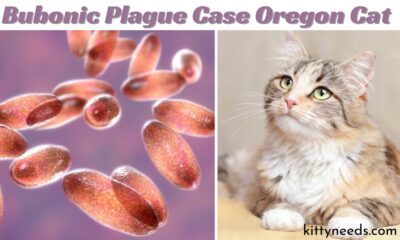
 Pets and Animals7 months ago
Pets and Animals7 months agoBubonic Plague case oregon cat: A Modern Tale of Medieval Disease
-
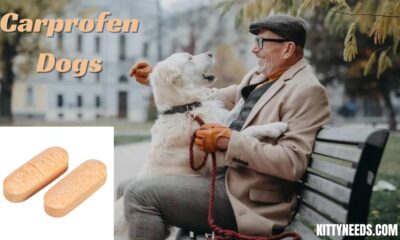
 Pet Care Guides7 months ago
Pet Care Guides7 months agoThe Definitive Guide to Rimadyl Carprofen Dogs: Uses, Dosage, and Safety
-
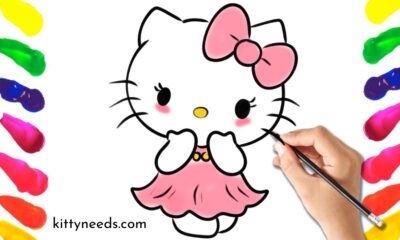
 Other7 months ago
Other7 months agoHow to Hello kitty drawing: A Step-by-Step Guide for Fans of All Ages
-
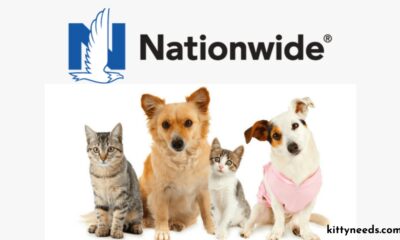
 Pet Care Guides7 months ago
Pet Care Guides7 months agoHere’s Why Nationwide Pet Insurance Should Be on Your Radar
